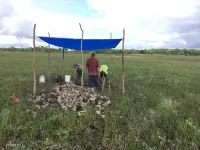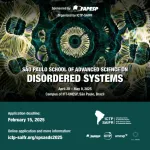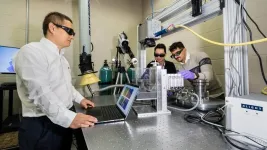(Press-News.org) New Haven, Conn. — Parents are much less likely to intervene when their young children are getting dressed or performing other simple chores if those tasks are framed as learning opportunities, according to a new study by Yale researchers.
Media reports and academic literature suggest that overparenting — a style of parenting in which adults persistently take over tasks or solve problems that would be developmentally appropriate for children to resolve on their own — is becoming increasingly prevalent. Studies have demonstrated that overparenting diminishes children’s motivation to complete tasks independently.
The study, published on November 21 in the journal Child Development, found that framing the task of getting dressed as a chance for preschool-aged children to learn reduced parental intervention by about 50%.
“When an adult steps in and completes a task for a young child, it can deprive the child of an opportunity to learn how to complete the task by themselves, which potentially harms their ability to develop self-efficacy, autonomy, and other important life skills,” said lead author Reut Shachnai, a graduate student in Yale’s Department of Psychology. “Our findings suggest that framing everyday tasks as learning opportunities can significantly reduce overparenting, and in turn boost children’s independence, persistence, and resilience.”
The study consists of three parts. In the first, the researchers surveyed 77 parents of 4-to-5-year-olds (62% mothers, 38% fathers) to gain a better understanding of their perceptions of children’s learning and their overparenting behaviors, and whether parents’ perceptions of learning and overparenting behaviors differ between academic and non-academic tasks. Parents reported taking over less on tasks they perceived as greater learning opportunities — more likely academic tasks, such as solving puzzles or tracing letters, rather than nonacademic chores such as getting dressed.
Next, the researchers conducted an experiment at a children’s museum in Philadelphia to test whether framing getting dressed as an educational opportunity reduced overparenting. To ensure the test was novel and challenging, they had 4-to-5-year-olds dress up in hockey gear — two shin guards and a chest guard. Before initiating the experiment, they established that the children could successfully complete the task on their own, meaning any intervention by parents could be considered an instance of overparenting.
The researchers randomly assigned 30 parent-child pairs either to a “big learning opportunity” condition, in which the parents were informed that children can learn key lifelong skills from putting on clothes, or to a control group where parents were told that dress-up activities helped children engage with the museum.
The experiment showed that framing the task as a learning opportunity decreased the number of actions parents performed for their child as they put on the hockey pads by about half, from an average of 8.6 actions in the control condition to 4.4 actions in the learning opportunity condition. Additionally, parents offered their children more encouragement and positive feedback when the task was framed as a learning opportunity.
A subsequent experiment tested whether parents’ perceptions of the magnitude of the learning opportunity affected how much they intervened during a task. Eighty parent-child pairs were randomly divided into two groups: One in which they were told that putting on clothes is an opportunity to learn important, lifelong skills, and another where parents were informed that putting on these clothes allows children to learn about hockey gear.
The experiment produced no evidence that parents intervene less when a task is couched as an important learning opportunity versus a minor one, as the number of interventions were similarly low in both groups. The researchers concluded that parents take over less whenever they view a task as a learning opportunity, no matter how big or small.
“It’s very common for parents, who are often pressed for time, to complete everyday tasks for their children, but there’s evidence that this behavior demotivates kids from doing things for themselves,” said Julia Leonard, assistant professor of psychology in Yale’s Faculty of Arts and Sciences and the study’s senior author. “Based on our work, we can recommend the following to parents, teachers, and mentors alike: The next time you find yourself tempted to complete a task for a child, take a moment to appreciate all that they can learn from trying to complete the task on their own.”
Mika Asaba, a postdoctoral fellow in Yale’s Department of Psychology, and Lingyan Hu, a graduate student at the University of Pennsylvania, are coauthors of the study.
# # #
END
The Golgi apparatus modifies, sorts and packages proteins to be sent to their final destinations, whether that’s within or outside of the cell.
It’s a core function, but little studied in the setting of cancer immunology, especially when compared to other organelles like the mitochondria or endoplasmic reticulum.
“So we were interested in looking a little bit more at the Golgi apparatus. It's obviously an important organelle. How is it being changed or what is its role in T-cells in terms of fighting cancer?” said Nathaniel Oberholtzer, an M.D./Ph.D. student who worked in the lab of ...
New York, NY | November 22, 2024 - On Friday the Sexual and Reproductive Justice Hub (SRJ Hub) at the CUNY Graduate School of Public Health and Health Policy (CUNY SPH) launched the newest iteration of the civil society-led Global 16 Days of Activism to End Gender-based Violence campaign.
For more than 30 years, feminist activists and movements around the world have used the 16 days between the International Day for the Elimination of Violence Against Women (November 25) and Human Rights Day (December 10) to advocate for an end to gender-based violence. ...
DURHAM, N.H.—(November 22, 2024)—An archaeologist from the University of New Hampshire and her team have collected data which indicates the presence of a large-scale pre-Columbian fish-trapping facility. Discovered in the Crooked Tree Wildlife Sanctuary (CTWS), the largest inland wetland in Belize, the team dated the construction of these fisheries to the Late Archaic period (cal. 2000-1900 BCE), pre-dating Amazonian examples by a thousand years or more.
“The network of canals was designed to channel annual flood waters ...
The South American Institute for Fundamental Research (ICTP-SAIFR) is organizing the São Paulo Advanced School on Disordered Systems, which will take place between April 28 and May 9, 2025, in São Paulo city, Brazil, at the São Paulo State University’s Institute of Theoretical Physics (IFT-UNESP).
One of the goals of the school is to reach a broad audience that includes students with a diverse background who are eager to receive systematic training on powerful theoretical methods and who also display a keen interest in complexity ...
While it’s well known that sleep enhances cognitive performance, the underlying neural mechanisms, particularly those related to nonrapid eye movement (NREM) sleep, remain largely unexplored. A new study by a team of researchers at Rice University and Houston Methodist’s Center for Neural Systems Restoration and Weill Cornell Medical College, coordinated by Rice’s Valentin Dragoi, has nonetheless uncovered a key mechanism by which sleep enhances neuronal and behavioral performance, potentially changing our fundamental understanding of how sleep ...
USC has embarked on a collaboration with Autobahn Labs, an accelerator for early-stage drug discovery, to identify and advance cutting-edge scientific findings into new therapies - with a special focus on critical unmet medical needs.
“Our collaboration with Autobahn Labs is a pivotal moment for our institution’s mission to bring academic innovations in drug discovery to market,” said Erin Overstreet, PhD, executive director of the USC Stevens Center for Innovation, which manages a broad portfolio of university-owned intellectual ...
DETROIT — Wayne State University's Center for Emerging and Infectious Diseases (CEID) is launching its participation in World AMR Awareness Week with an urgent message: the growing threat of antimicrobial resistance requires immediate community action, so it is critical to educate, advocate, and act now.
Antimicrobial Resistance (AMR) occurs when bacteria, viruses, fungi, and parasites no longer respond to antimicrobial agents. Because of drug resistance, antibiotics and other antimicrobial agents become ineffective and infections become difficult or impossible to treat, increasing the risk of spreading various diseases ...
University of Wisconsin–Madison engineers have found a way to simultaneously mitigate three types of defects in parts produced using a prominent additive manufacturing technique called laser powder bed fusion.
Led by Lianyi Chen, an associate professor of mechanical engineering at UW–Madison, the team discovered the mechanisms and identified the processing conditions that can lead to this significant reduction in defects. The researchers detailed their findings in a paper published on November 16, 2024, in the International Journal of Machine Tools and Manufacture.
“Previous research has normally focused on reducing one type of defect, but that would ...
New Curtin University-led research has uncovered what may be the oldest direct evidence of ancient hot water activity on Mars, revealing the planet may have been habitable at some point in its past.
The study analysed a 4.45 billion-year-old zircon grain from the famous Martian meteorite NWA7034, also known as Black Beauty, and found geochemical ‘fingerprints’ of water-rich fluids.
Study co-author Dr Aaron Cavosie from Curtin’s School of Earth and Planetary Sciences said the discovery opened up new avenues for understanding ancient Martian hydrothermal systems associated ...
In an era of dwindling glaciers, Southern Patagonia has managed to hold on to a surprising amount of its ice. But, A new study in Scientific Reports from INSTAAR postdoc Matthias Troch suggests that this protective effect might be pushed up against its limits soon.
Before making predictions, Troch and his collaborators looked back in time. They used an equation that, when plugged into NASA’s ice-sheet and sea-level system model, simulated glacial dynamics for the past six millenia. The results showed that precipitation, not temperature, was the main culprit of glacier fluctuation during around 4,500, of the past 6,000 years, or 76 percent of the time. In ...







